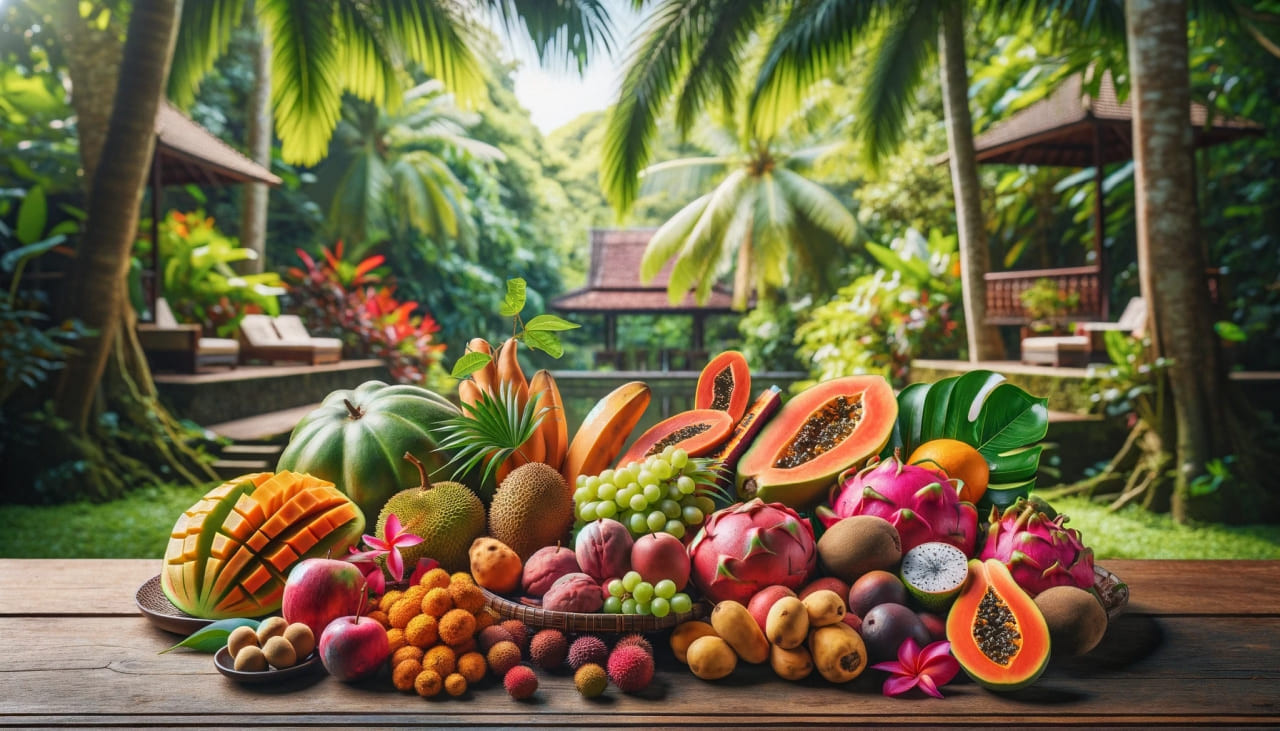
30 exotic fruits from around the world
Mango (Mangifera indica)
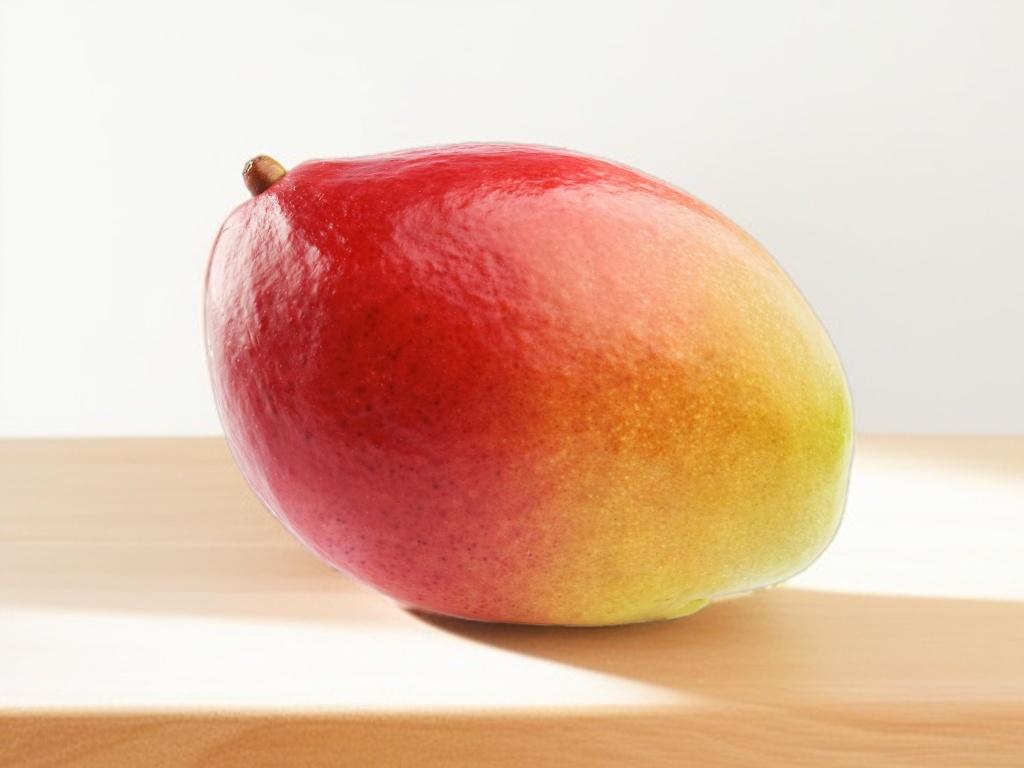
Mango (Mangifera indica), often called the "king of fruits," is a popular tropical fruit.
🌍 Mango originated in South Asia, particularly in India.
🌟 It is widely loved and consumed around the world, especially in India, Pakistan, Thailand, and the Philippines.
Mangoes come in various shapes and sizes depending on the variety. The fruit color can range from green to yellow, orange, and even red.
The mango season depends on the region, but it often occurs from May to September.
Mangoes are known for their sweet, juicy, and aromatic flavor. The flesh can be soft or fibrous, depending on the variety.
✅ Rich in vitamins A, C, E, and also contains a lot of fiber, antioxidants, and minerals.
✅ Beneficial for improving vision, strengthening the immune system, and maintaining healthy skin.
⚠ In rare cases, it may cause allergic reactions.
Mangoes are used fresh, as well as in salads, desserts, smoothies, and cocktails. Widely used in Eastern cuisine, including for the preparation of chutney and curry.
💡 India is considered the largest producer of mangoes in the world. Most of the harvest is consumed within the country.
💡 In Hindu mythology, mango is considered a sacred fruit and a symbol of love.
Papaya (Carica papaya)
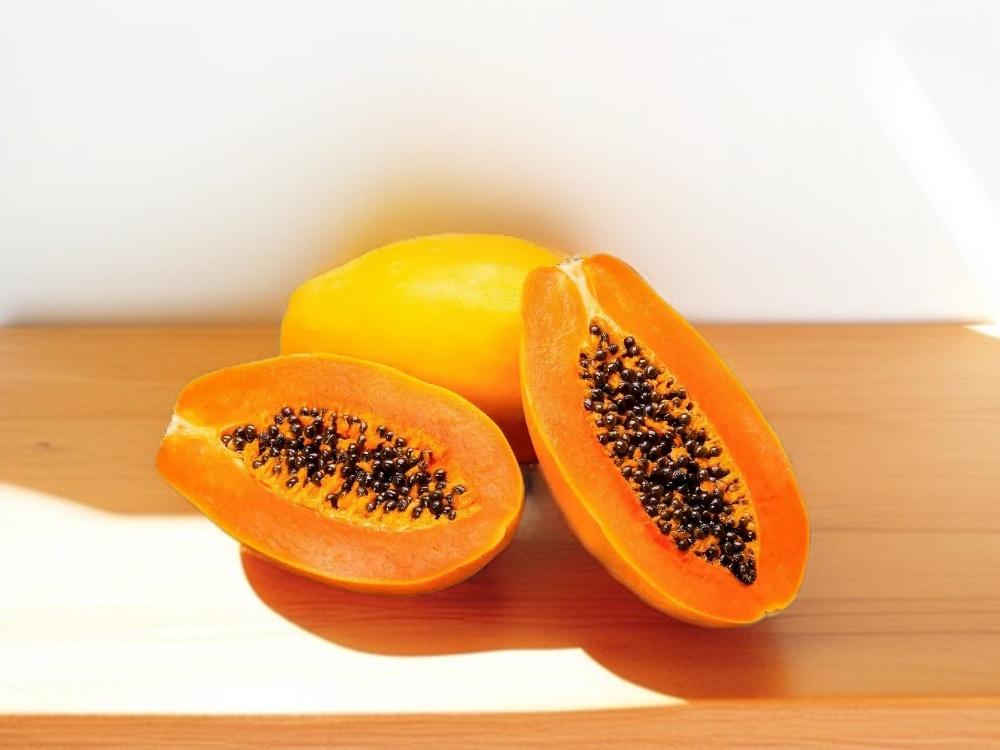
Papaya (Carica papaya), also known as papaw, is a tropical fruit with soft golden-orange flesh and a unique taste.
🌍 Papaya originates from Central America, particularly from Mexico.
🌟 It is very popular in many tropical countries, including Brazil, India, Indonesia, and the Philippines.
Papaya fruits are typically elongated and can reach up to 20 cm in length. The skin is green when unripe and turns yellow or orange when ripe.
The papaya season is year-round, but the peak is in early summer.
The flesh of papaya is sweet with musky undertones, and its consistency is soft and delicate.
✅ Papaya is rich in vitamins C and A and contains the enzyme papain, which aids digestion.
✅ Beneficial for improving digestion, strengthening immunity, and fighting free radicals.
⚠ The high enzyme content can cause irritation in people with sensitive stomachs.
Papaya is consumed fresh, in salads, smoothies, and desserts. It is also used as a natural meat tenderizer due to its papain content.
💡 In some cultures, papaya seeds are used as a substitute for pepper.
💡 Unripe papaya is often used in Asian cuisine, for example, in the famous Thai salad "Som Tam."
Dragon Fruit (Hylocereus undatus)
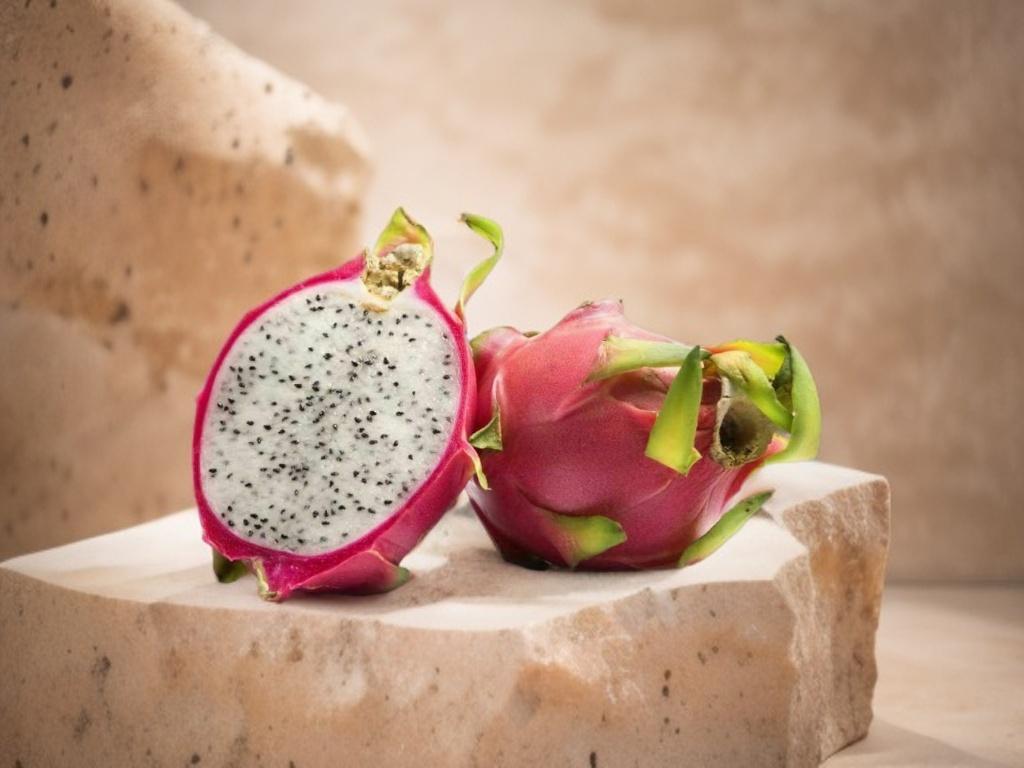
Dragon fruit, also known as pitaya, is a bright and exotic fruit belonging to the cactus family.
🌍 Dragon fruit is native to Southeast Asia.
🌟 Particularly popular in countries such as Vietnam, Thailand, Malaysia, as well as in Latin America.
This fruit has a unique appearance: bright pink, red, or yellow skin with green scales, reminiscent of a dragon. The flesh is white or red with numerous tiny seeds.
The dragon fruit season mainly falls in the summer and early autumn.
The taste of pitaya is described as mild, slightly sweet, resembling a combination of kiwi and pear.
✅ Dragon fruit is rich in antioxidants, vitamins (C, B), and fiber.
✅ Beneficial for digestion, strengthening immunity, and maintaining healthy skin.
⚠ Rarely causes side effects, but in some cases, it can cause an allergic reaction.
Pitaya is usually consumed fresh, also added to salads, smoothies, yogurts, and desserts. Often used for dish decoration due to its unusual appearance.
💡 The flowers of the dragon fruit, also known as "Moonflowers," bloom at night and live only for one night.
💡 In Vietnam, dragon fruit is considered a symbol of luck and is often presented as a gift during traditional festivals.
Rambutan (Nephelium lappaceum)
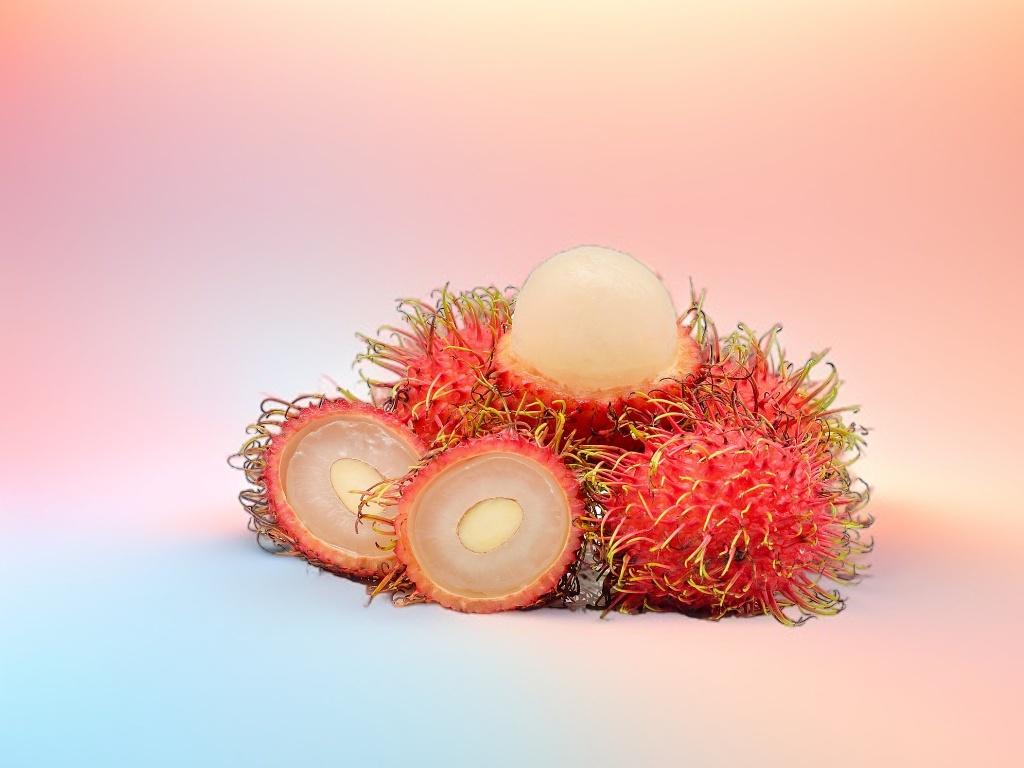
Rambutan is a tropical fruit known for its unique appearance, resembling a hairy ball.
🌍 Rambutan is native to Malaysia.
🌟 Particularly popular in Southeast Asia, including Indonesia, Thailand, and the Philippines.
Rambutan has an oval shape and is covered with bright red or yellowish skin with soft spines or hairs. The flesh inside is transparent or white, juicy, enveloping a seed.
The rambutan season usually falls in mid-summer.
The taste of rambutan is sweet and refreshing, resembling a combination of grape and lychee flavors.
✅ Rambutan is rich in vitamin C, fiber, and some minerals such as iron and calcium.
✅ Beneficial for strengthening the immune system and improving digestion.
⚠ It is advisable to avoid consuming the hard seed inside, as it can be toxic.
Rambutan is most often consumed fresh, but it can also be added to fruit salads, desserts, and cocktails.
💡 The name "rambutan" comes from the Malay word "rambut," which means "hair."
💡 In some Southeast Asian countries, rambutan is used in traditional medicine to treat various ailments.
Lychee (Litchi chinensis)

Lychee is a tropical fruit belonging to the soapberry family, known for its sweetness and unique aroma.
🌍 Lychee originated in China.
🌟 Very popular in Southeast Asia, especially in China, Thailand, and Vietnam, as well as in other tropical regions of the world.
Lychees are round or oval, about the size of a small grape. The skin is red or pink with a rough texture. The flesh inside is transparent, juicy, enveloping a seed.
The lychee season occurs at the end of spring and the beginning of summer.
The taste of lychee is sweet and refreshing, with light floral notes.
✅ Lychees are rich in vitamin C, fiber, and beneficial antioxidants.
✅ Contributes to strengthening the immune system and improving digestion.
⚠ It is advisable to avoid consuming unripe fruits, as they can contain toxic substances.
Lychees are usually consumed fresh, also added to salads, desserts, cocktails, and used for making jams.
💡 In China, lychee is considered a symbol of love and romance.
💡 Historically, lychees were one of the favorite fruits of Chinese emperors, and special caravans were organized to deliver fresh fruits to the palace.
Carambola (Averrhoa carambola)
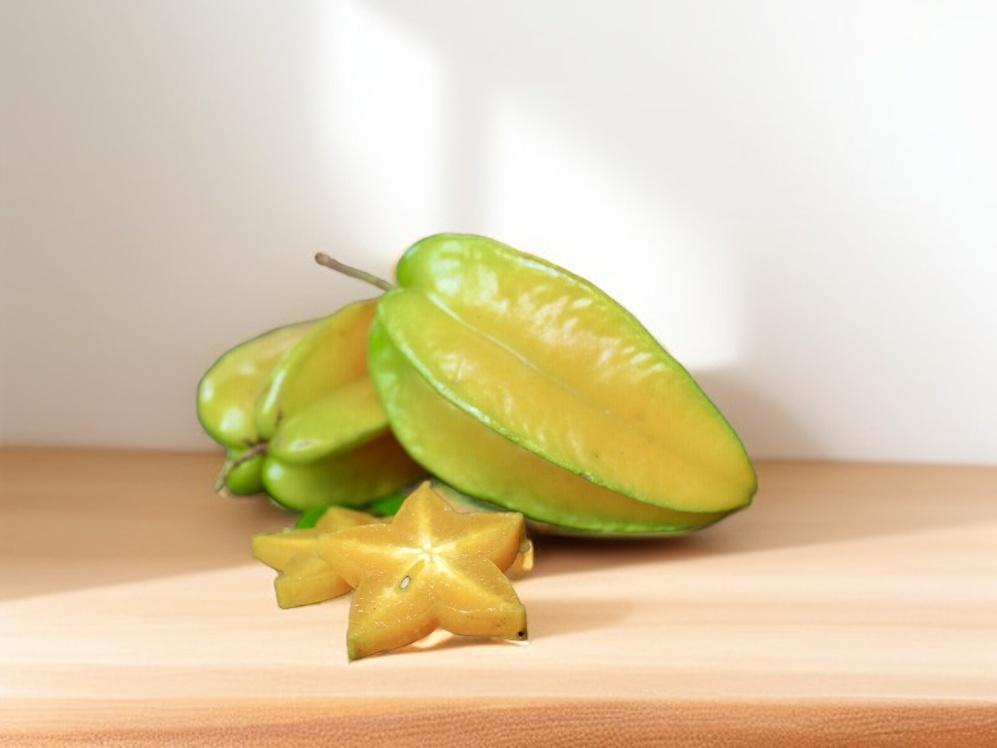
Carambola, also known as star fruit, is a unique tropical fruit notable for its shape, resembling a star when cut.
🌍 Carambola originates from Sri Lanka and Indonesia.
🌟 Popular in Southeast Asia, particularly in Malaysia, the Philippines, as well as in Latin America and Hawaii.
Carambola has an elongated shape, about 5-15 cm in length. Fruits are usually bright yellow with a light green tint and a ribbed surface.
The carambola season is mainly from June to February, but it can vary depending on the region.
The taste of carambola varies from sweet to sour-sweet, with a watery and crunchy texture.
✅ Rich in vitamins C and A, as well as containing fiber and antioxidants.
✅ Beneficial for digestion and strengthening the immune system.
⚠ People with kidney diseases should consume it cautiously due to its high oxalate content.
Star fruit is used fresh, in salads, for decorating dishes and drinks, and also in jams and syrups.
💡 Carambola can be used as a natural cleaning agent due to its high acid content.
💡 In the Philippines and Malaysia, carambola is often eaten with salt or soy sauce to enhance its flavor.
Durian (Durio)
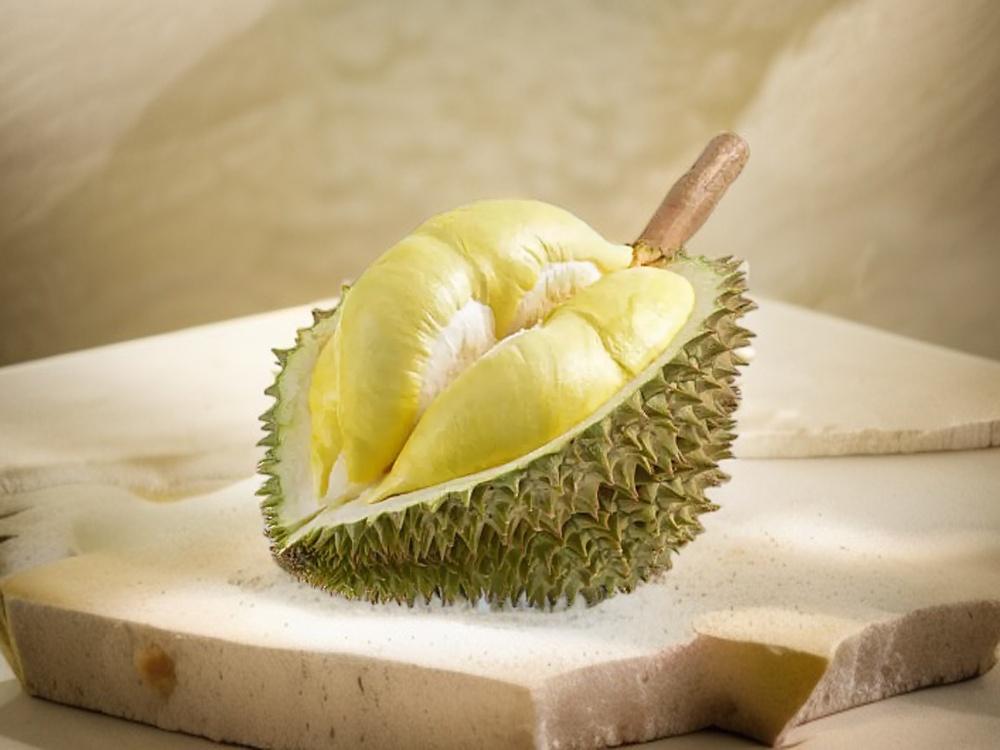
Durian (Durio) is also known as the "king of fruits" in Southeast Asia.
🌍 Durian originates from Malaysia and Indonesia.
🌟 Especially popular in Southeast Asia, particularly in Thailand, Malaysia, Indonesia, and the Philippines.
The king of fruits is large, reaching up to 30 cm in length and 15 cm in width. Its skin is covered with hard spikes. The inner part is creamy, with a soft and sticky texture.
The durian season usually falls in the summer, from June to August.
The taste of durian is unique - it has a sweet and creamy flavor with hints of almond. However, its smell is often described as unpleasant and pungent.
✅ Durian is rich in carbohydrates, vitamins (C, B6), and minerals, especially potassium.
✅ Beneficial for improving digestion and strengthening the immune system.
⚠ Consumption of durian with alcohol is not recommended due to the risk of serious side effects.
⚠ May cause allergies in some people.
Durian is often eaten fresh, and also used in desserts, such as ice cream or cakes.
💡 In some Southeast Asian countries, durian is banned in public places and transport due to its strong and penetrating smell.
Passion Fruit (Passiflora edulis)
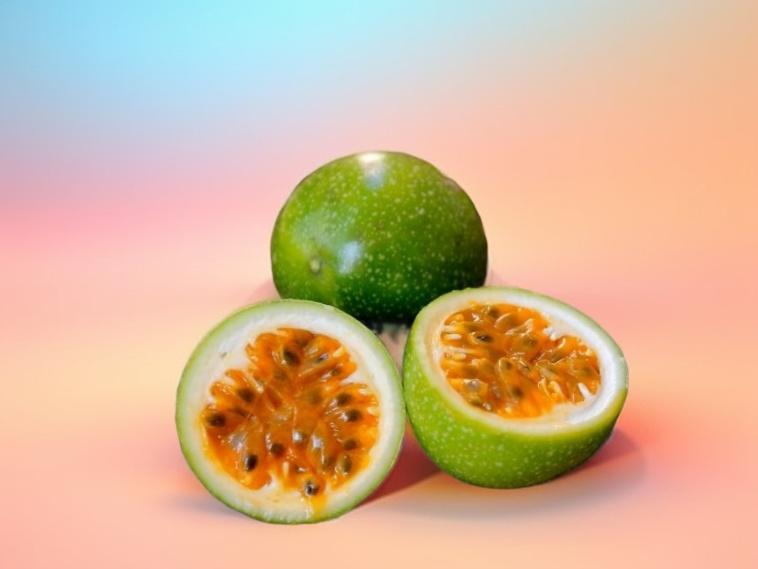
Passion fruit, also known as Passiflora, is an exotic fruit known for its fragrant taste and unique seeds.
🌍 It originates from South America, particularly Brazil, Paraguay, and northern Argentina.
🌟 Popular worldwide, especially in tropical countries.
Passion fruit has a round or oval shape, with purple or yellow skin. Inside, it contains numerous small edible seeds surrounded by fragrant, jelly-like pulp.
The passion fruit season depends on the region but usually falls in the summer and autumn months.
The pulp of passion fruit has an intense tropical taste, sweet with a sour tinge, and is very aromatic.
✅ Rich in vitamin C, antioxidants, and fiber.
✅ Beneficial for strengthening the immune system, maintaining skin health, and improving digestion.
⚠ Its high acid content can cause irritation in people with sensitive stomachs.
Passiflora is ideal for adding to smoothies, yogurts, desserts, and sauces. Also used for making syrups, jams, and drinks.
💡 The name "passion fruit" comes from the Portuguese word "maracujá", which in turn is taken from the Tupi language and means "food prepared in a pot".
💡 The passion fruit flower is considered one of the most exotic and beautiful and is often used for decorative purposes.
Guava (Psidium guajava)
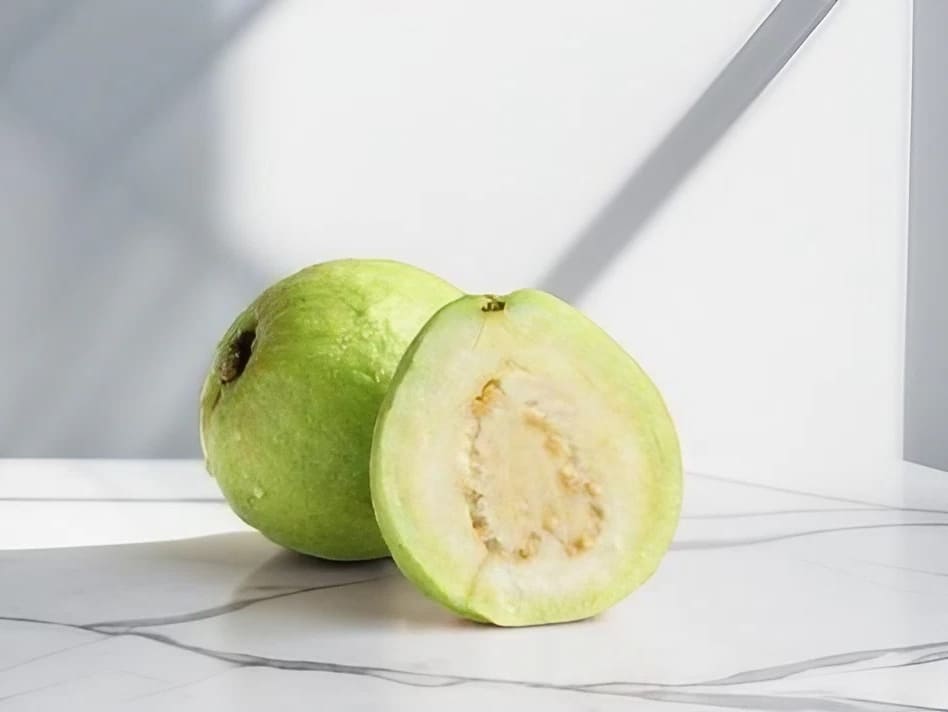
Guava, or Psidium, is a tropical fruit known for its unique aroma and numerous varieties.
🌍 Guava originates from Central America, particularly Mexico.
🌟 Widely distributed and popular in South and Central America, Asia, and Africa.
Guava has a round or elongated shape, about the size of an apple or a small grapefruit. The skin can be green, yellow, or reddish. The flesh is most often white, pink, or red.
The guava season is mainly year-round, but the peak season falls in summer and autumn.
The taste of guava varies from sweet to sour-sweet, with a rich tropical aroma. The flesh is juicy, with small edible seeds.
✅ Guava is rich in vitamin C (even more than oranges), fiber, and antioxidants.
✅ Promotes strengthening of the immune system, improvement of vision, and maintenance of skin health.
⚠ Due to its high fiber content, it may cause digestive problems if consumed excessively.
Psidium is often eaten fresh, as well as in juices, smoothies, jams, and desserts. Used for making sauces, such as chutney.
💡 In some cultures, guava leaves are used for medicinal purposes, such as treating diarrhea.
💡 Guava is considered one of the richest sources of nutrients among fruits, while being low in calories.
Cherimoya (Annona cherimola)
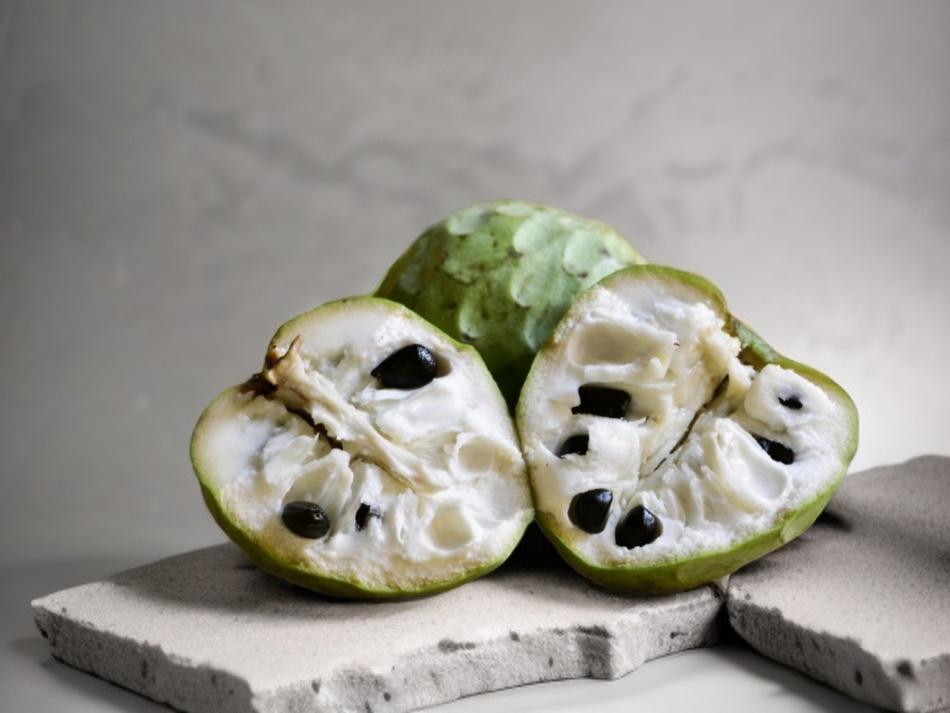
Cherimoya, an exotic fruit belonging to the Annonaceae family, is known for its delicate and fragrant taste.
🌍 Cherimoya originates from the Andes, particularly Peru and Ecuador.
🌟 Popular in South America, as well as in some areas of North America, Europe, and Asia.
Cherimoya has a green skin with an uneven texture, resembling scales. The shape of the fruit varies from heart-shaped to round or irregular. Inside, the flesh is white and creamy.
The cherimoya season usually falls in the spring.
The taste of cherimoya is often described as a combination of banana, pineapple, papaya, and strawberry, with a creamy and sweet texture.
✅ Rich in vitamins C and B, as well as fiber and antioxidants.
✅ Promotes strengthening of the immune system and improvement of digestion.
⚠ Consumption of seeds should be avoided as they can be toxic.
Cherimoya is usually eaten fresh. Also suitable for making desserts, smoothies, and fruit salads.
💡 Cherimoya is sometimes called "ice cream in a natural package" due to its creamy texture.
💡 In many South American cultures, cherimoya is considered a delicacy and is often served as a dessert at festive events.
Tamarind (Tamarindus indica)

Tamarind is a tropical fruit known for its sweet and sour taste and versatility in use.
🌍 Tamarind originates from Africa but is widely spread in South Asia, especially in India.
🌟 Popular in Asia, Africa, Latin America, and the Caribbean region.
Tamarind resembles bean pods with a brown shell. Inside, it contains a sweet and sour pulp with hard seeds.
The tamarind season depends on the region, but it is usually harvested from late spring to early summer.
The pulp of tamarind has a complex sweet and sour taste, often with hints of caramel and citrus.
✅ Rich in B vitamins, fiber, potassium, and magnesium.
✅ Beneficial for digestion, improving circulation, and lowering cholesterol levels.
⚠ Excessive consumption can cause stomach irritation due to its high acid content.
Tamarind is widely used in Asian, Latin American, and African cuisines. It is used in sauces, drinks, confectionery, and curries.
💡 Tamarind is often called the "Indian date," although it is not directly related to dates.
💡 In traditional Indian medicine, tamarind is used to treat various diseases, including fever and stomach disorders.
Kiwano (Cucumis metuliferus)
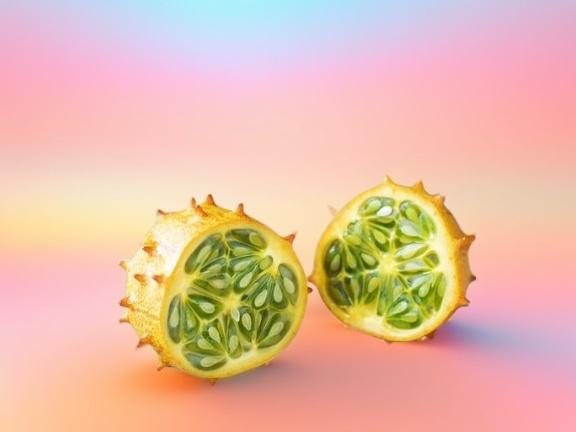
Kiwano, also known as the African horned cucumber or horned melon, is an exotic fruit with a unique appearance.
🌍 Kiwano originates from Africa, particularly the Sub-Saharan region.
🌟 Popular in Africa, New Zealand, parts of Australia, and gradually gaining popularity in Europe and the USA.
Kiwano has a bright orange skin with many horn-like protrusions. Inside, the flesh is green, gel-like with many edible seeds.
The kiwano season falls in the summer and early autumn.
The taste of kiwano is sweet and refreshing, with notes of banana, cucumber, and lemon.
✅ Rich in antioxidants, vitamin C, and fiber.
✅ Beneficial for strengthening the immune system, improving skin health, and digestion.
⚠ Rarely causes side effects, but should be consumed in moderation due to its high water and fiber content.
The fruit can be eaten fresh, as well as used in salads, smoothies, and desserts. It adds an exotic taste and bright color to dishes.
💡 Kiwano is also known for its decorative qualities and is often used as a dish garnish.
💡 In traditional African medicine, kiwano is used to treat various ailments, including headaches and stomach disorders.
Mangosteen (Garcinia mangostana)
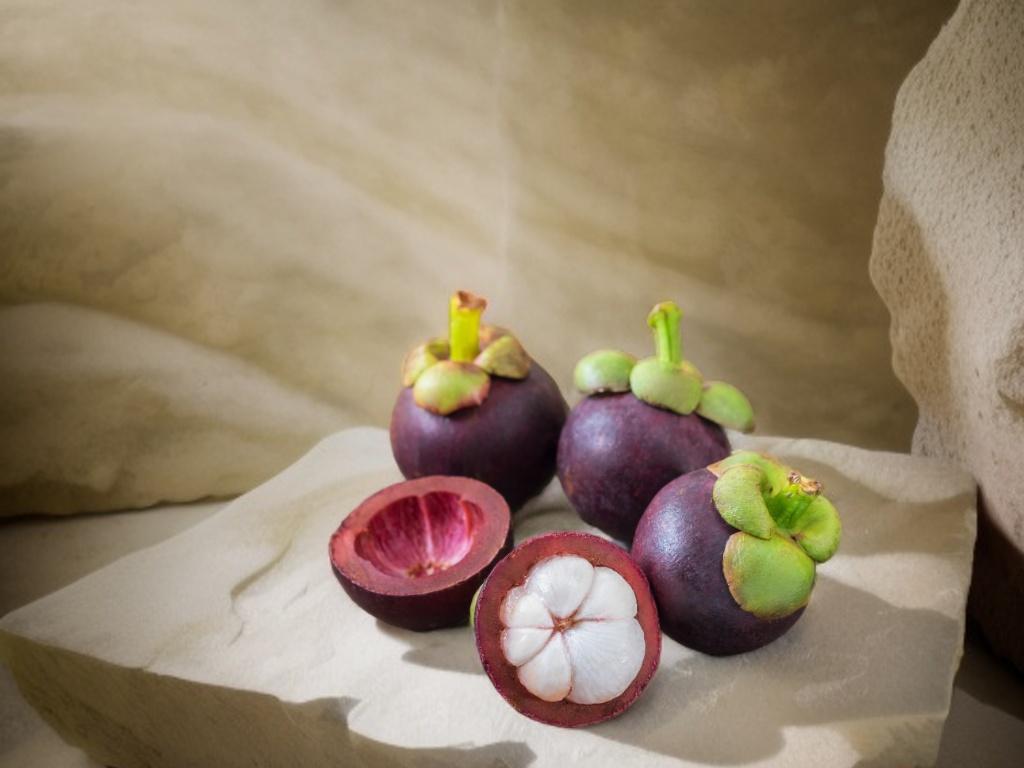
Mangosteen, known as the "queen of fruits," is a tropical fruit prized for its delicate and aromatic taste. Other spellings include mangostan and mangustin.
🌍 Mangosteen originates from Southeast Asia.
🌟 Especially popular in Thailand, Malaysia, Indonesia, and the Philippines, as well as in many other tropical regions.
The queen of fruits has a round shape and smooth dark purple skin. Inside, it contains white segments of flesh, similar to parts of a mandarin.
The mangosteen season usually falls in the summer months.
The taste of mangosteen is sweet and delicate, with light floral and sour notes.
✅ Rich in antioxidants, vitamin C, and fiber.
✅ Beneficial for strengthening immunity, improving digestion, and reducing inflammation.
⚠ Rarely causes side effects, but should be consumed in moderate amounts.
Mangosteen is usually consumed fresh but can also be used in desserts, smoothies, and fruit salads.
💡 Mangosteen has long been a valued fruit in Southeast Asia and is known for its medicinal properties in traditional Asian medicine.
💡 Due to its unique taste and aroma, mangosteen is often used in haute cuisine for preparing exotic dishes.
Acai Berry (Euterpe oleracea)
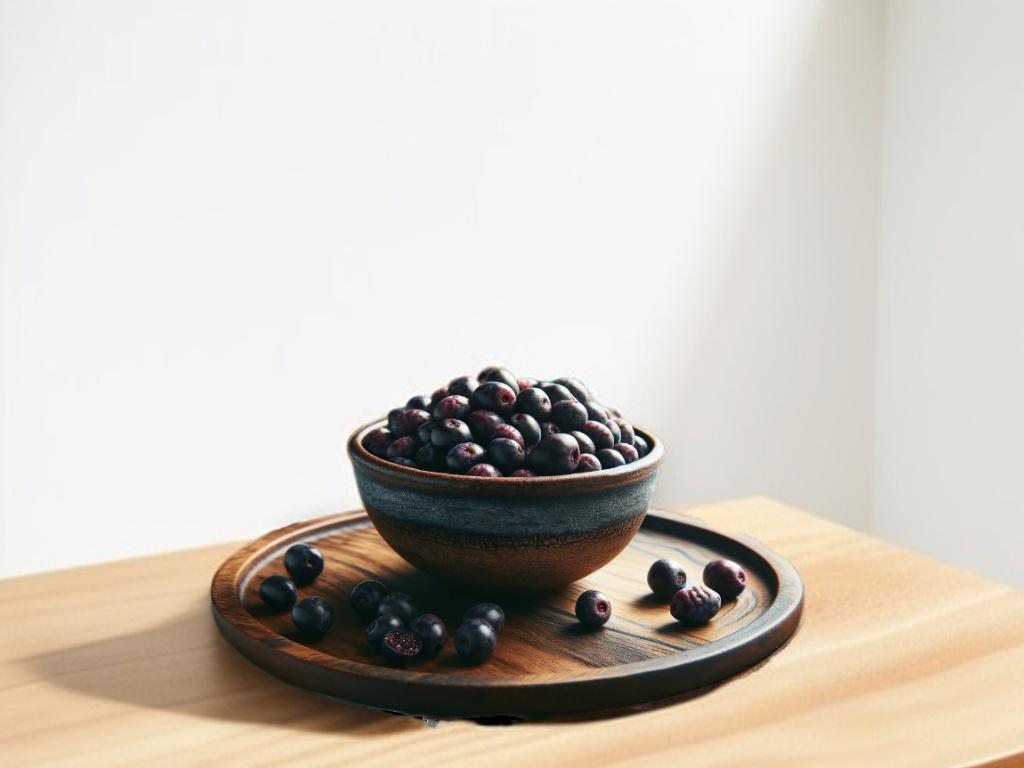
The acai berry is a popular superfood known for its nutritional properties and powerful antioxidant effects.
🌍 It originates from the tropical forests of the Amazon, especially from Brazil.
🌟 Very popular in South America and gradually gaining popularity in North America, Europe, and Asia.
The acai berry is small and round, similar in size and appearance to a blueberry but with a dark purple, almost black hue.
The acai berry season falls during the dry season in the Amazon, usually from July to December.
Acai berries have an earthy taste, often compared to a blend of blueberry and dark chocolate.
✅ Rich in antioxidants, vitamins A, C, E, and Omega-3 fatty acids.
✅ Beneficial for the cardiovascular system, improving skin health, and overall immune system strengthening.
⚠ Should be consumed in moderation due to its high calorie and fat content.
Acai berries are often used in smoothies, yogurts, muesli, and bowls. Also popular in powdered or frozen puree forms.
💡 The acai berry has become globally known for its superfood status and health benefits.
💡 In the traditional cuisine of the indigenous peoples of the Amazon, acai has been used for centuries as a primary food source.
Longan (Dimocarpus longan)
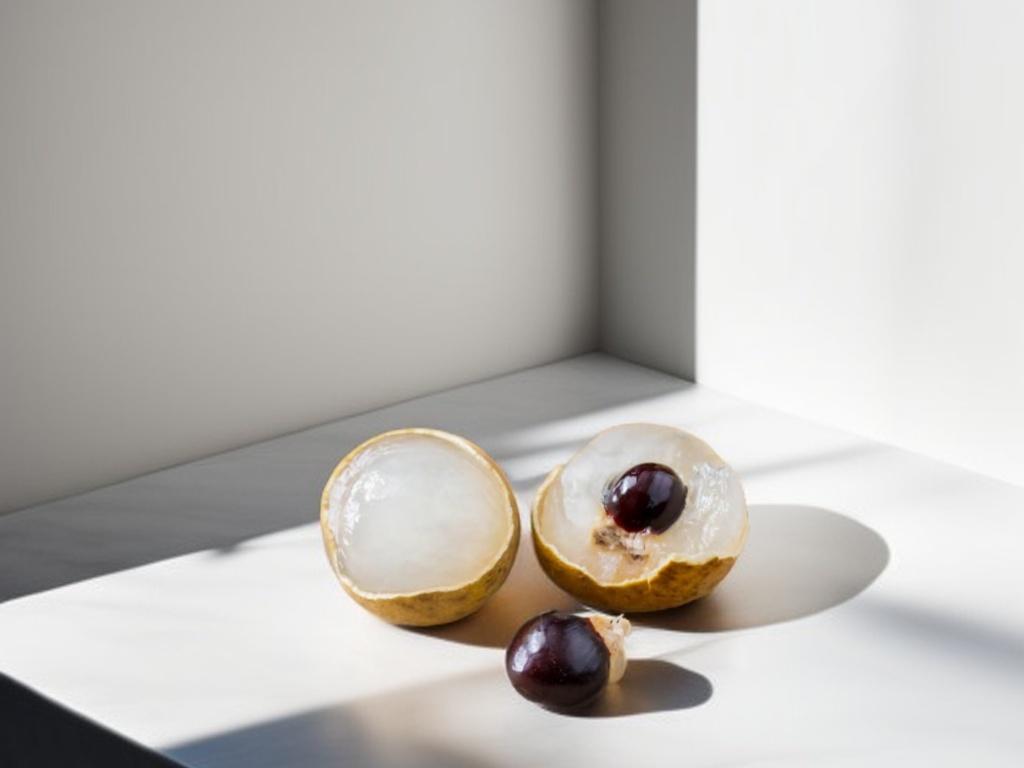
Longan, also known as "dragon eye," is a tropical fruit closely related to lychee, valued for its sweet taste and nutritional properties.
🌍 It originates from Southeast Asia, especially Thailand, Vietnam, and China.
🌟 Popular in Asian countries and gradually gaining popularity in other parts of the world.
The dragon eye is small in size, round in shape, with a thin yellowish-brown skin. Inside, the flesh is transparent and juicy, with a black shiny seed in the center.
The longan season usually falls in the summer.
The taste of longan is sweet, with light muscat notes. The flesh is tender and juicy, reminiscent of the taste of lychee.
✅ Rich in vitamin C, fiber, and other beneficial microelements.
✅ Beneficial for strengthening immunity, improving brain function, and overall well-being.
⚠ Consume in moderation to avoid digestive problems.
Longan is usually eaten fresh and also added to fruit salads, desserts, and drinks. Used in traditional Asian dishes.
💡 In Chinese culture, longan is considered a symbol of luck and prosperity.
💡 In traditional Chinese medicine, longan is used to improve concentration and calm nerves.
Sapodilla (Manilkara zapota)
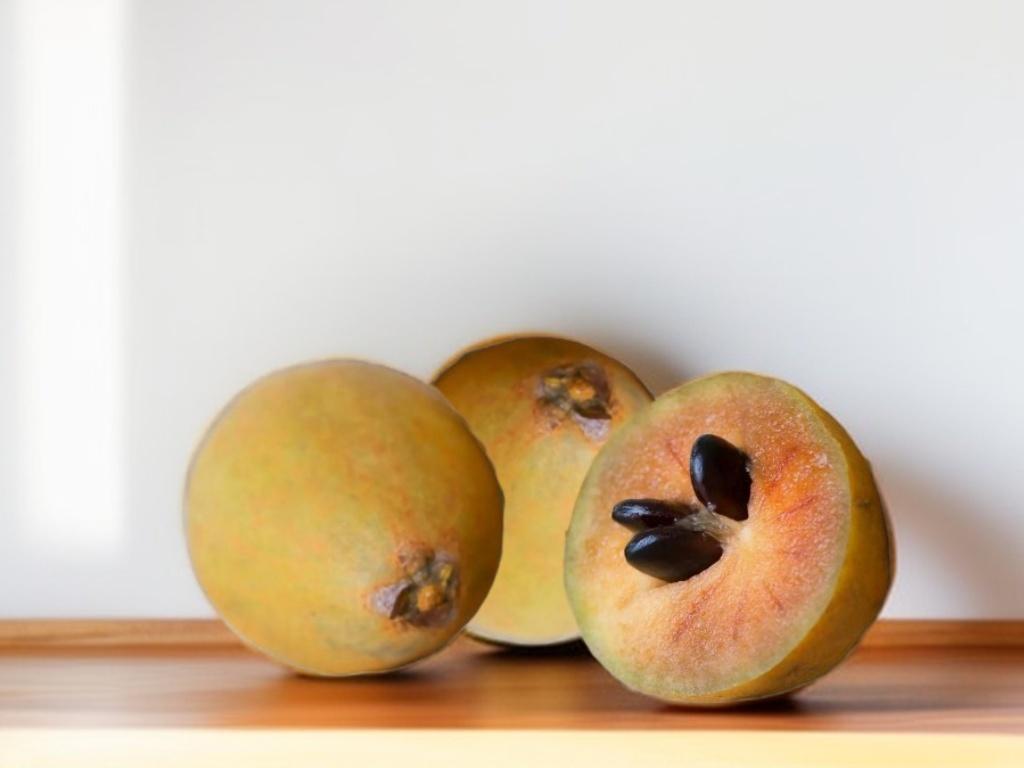
Sapodilla, also known as chiku or nispero, is a tropical fruit known for its sweet and aromatic flesh.
🌍 Sapodilla originates from Central America, particularly Mexico and Belize.
🌟 Popular in Latin America, the Caribbean Basin, Southeast Asia, and India.
Sapodilla has a round or oval shape, about the size of an apple or orange. The skin is brownish, and the flesh inside is brown or pinkish, with several black seeds.
The sapodilla season varies depending on the region but usually falls in spring and summer.
The taste of sapodilla is sweet, reminiscent of a combination of pear, apple, and caramel, with a creamy texture.
✅ Rich in fiber, vitamins C and A, as well as iron and potassium.
✅ Beneficial for digestion, strengthening immunity, and maintaining skin health.
⚠ Avoid consumption of unripe fruits as they can be hard, and sapodilla contains saponin, which in large amounts can be unpleasant to taste.
Nispero is usually eaten fresh. It is also used for making jams, desserts, and smoothies. In some culinary traditions, it is added to baked goods and ice cream.
💡 The latex of the sapodilla tree, known as chicle, is traditionally used to make natural chewing gum.
💡 In pre-Columbian Mesoamerica, sapodilla was one of the main fruits in the diet of the Maya and Aztecs.
Feijoa (Acca sellowiana)
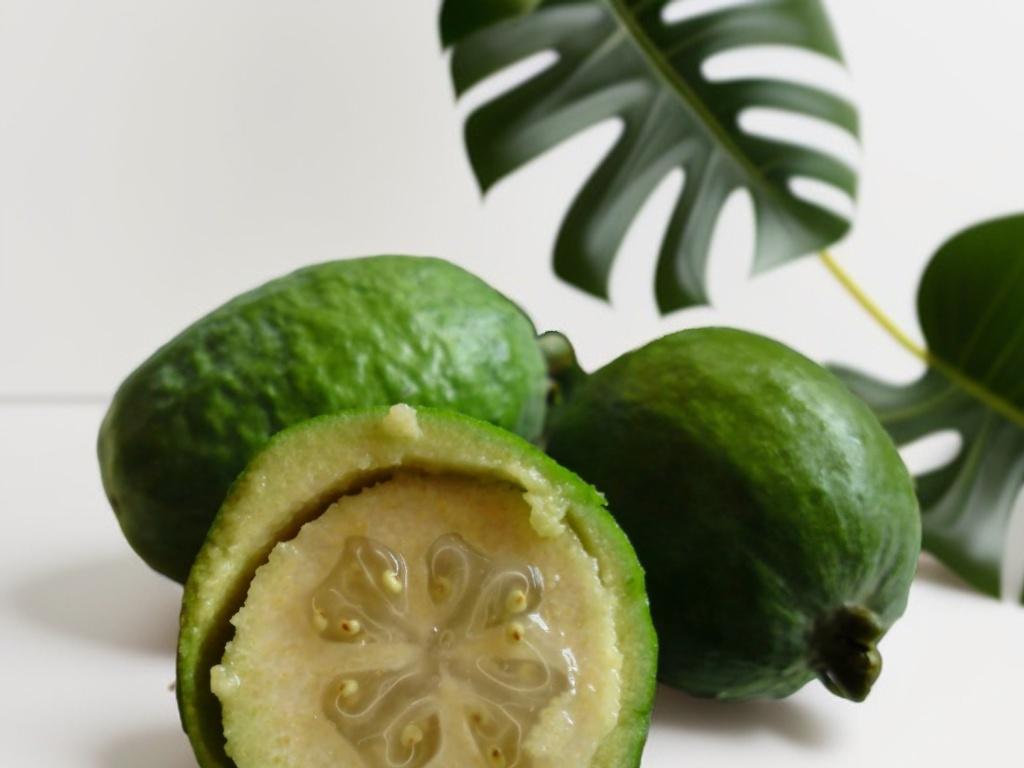
Feijoa, also known as guavasteen or Brazilian guava, is an exotic fruit with a unique taste and aroma.
🌍 Feijoa originates from South America, particularly Brazil and Uruguay.
🌟 Popular in New Zealand, where it is widely cultivated, as well as in Russia, Georgia, and other countries with a temperate climate.
Feijoa has an oval or round shape with green skin and soft flesh containing small edible seeds.
The feijoa season falls in autumn.
The taste of feijoa is described as a combination of strawberry, pineapple, and guava with a tender and juicy texture.
✅ Rich in vitamin C, fiber, and antioxidants.
✅ Beneficial for strengthening the immune system, maintaining skin health, and improving digestion.
⚠ Rarely causes side effects, but people with sensitive stomachs should consume it cautiously.
Guavasteen is eaten fresh and also used in the preparation of jams, desserts, salads, and drinks.
💡 Feijoa is often used in cosmetic products due to its antioxidant properties.
💡 In New Zealand, feijoa has become so popular that it has become a significant part of national cuisine.
Salak (Salacca zalacca)
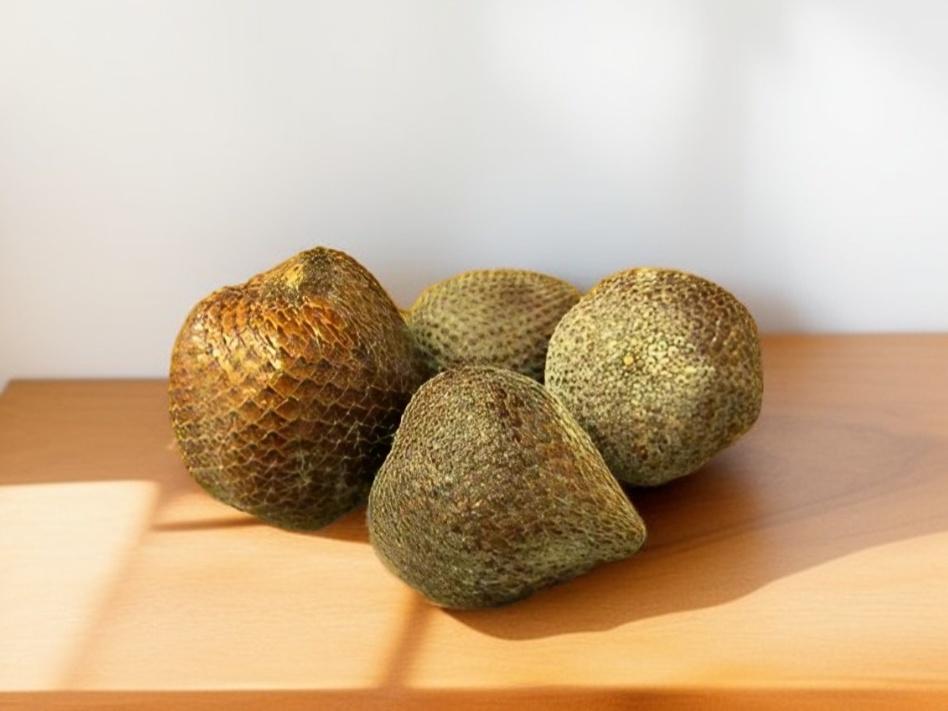
Salak, also known as snake fruit, is a tropical fruit primarily cultivated in Indonesia and Malaysia.
🌍 It originates from Indonesia, especially the islands of Java and Sumatra.
🌟 Popular in Southeast Asia, particularly in Indonesia, Malaysia, and Thailand.
Salak has a unique appearance with brownish-red, rough skin, resembling snake skin. Inside, the flesh is divided into segments, containing one or more seeds.
The salak season is year-round, but the peak harvest usually occurs in the middle of the year.
The taste of snake fruit varies depending on the variety: from sweet to sour-sweet, with a tangy aftertaste and slightly crunchy texture.
✅ Rich in fiber, antioxidants, potassium, and iron.
✅ Beneficial for digestion, improving memory, and eye health.
⚠ People with diabetes and gastrointestinal problems should consume it cautiously due to its astringency and sugar content.
Salak is usually eaten fresh, but it can also be added to fruit salads or used to make jams and syrups.
💡 In Indonesia, salak is often used in traditional ceremonies and rituals.
💡 Salak was introduced into culture in other tropical countries, including Thailand and Malaysia, where it has also become popular.
Jackfruit (Artocarpus heterophyllus)
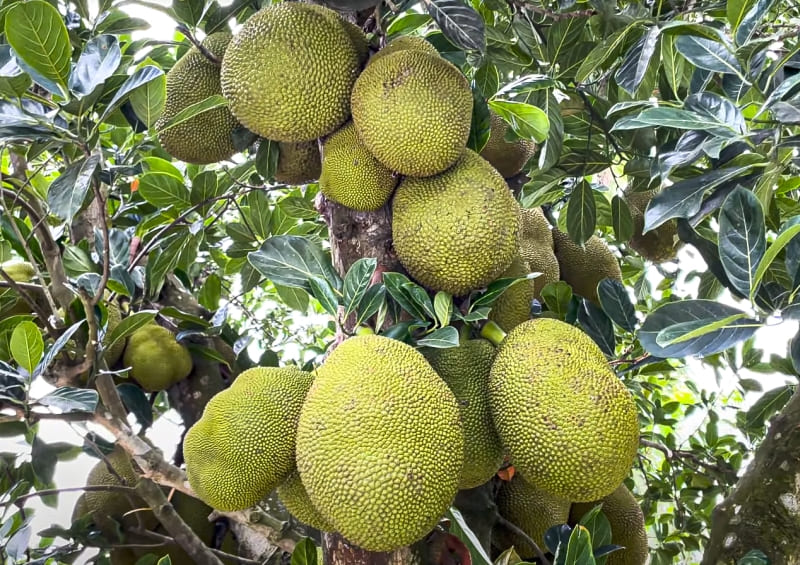
Jackfruit, also known as jackfruit, is the largest tree-borne fruit in the world and is known for its unique taste and texture.
🌍 Jackfruit originates from South India and Bangladesh.
🌟 Widely spread and popular in South and Southeast Asia, especially in Thailand, Malaysia, Indonesia, and the Philippines.
Jackfruit can reach enormous sizes, weighing up to 35 kg or more. It has green or yellowish skin with spikes. Inside, it contains numerous large edible seeds surrounded by fleshy pulp.
The jackfruit season usually lasts from late spring to early summer.
Ripe jackfruit has a sweet, rich taste reminiscent of a combination of banana, pineapple, and mango. Unripe jackfruit is used in cooking as a vegetable, with a taste resembling young potato or artichoke.
✅ Rich in vitamin C, fiber, and carbohydrates.
✅ Beneficial for improving digestion, strengthening the immune system, and maintaining energy levels.
⚠ Due to its high carbohydrate content, it should be consumed in moderation in cases of diabetes.
Jackfruit is eaten both fresh and cooked. It is used in curries, salads, desserts, and even as a meat substitute in vegetarian and vegan dishes.
💡 In some regions of India and Bangladesh, jackfruit is considered a national fruit.
💡 Jackfruit is used not only for food but also for medicinal purposes, including treating skin diseases and improving digestion.
Breadfruit (Artocarpus altilis)
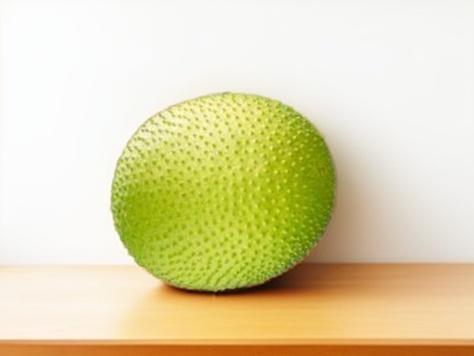
Breadfruit, a close relative of jackfruit, is a tropical fruit of the breadfruit tree, known for its nutritional value and culinary versatility.
🌍 Breadfruit originates from the Malay Archipelago and Pacific Islands.
🌟 Widely spread and popular in tropical areas of the world, including the Caribbean, Polynesia, and parts of South Asia.
The fruits of the breadfruit tree have a round or oval shape, with green or yellowish skin, sometimes with a bumpy texture. Inside, the flesh can be white or yellow, often fibrous.
The breadfruit season lasts all year round, making it an important food source in the tropics.
The taste depends on the degree of ripeness: unripe breadfruit has a neutral, potato-like taste, while ripe breadfruit is sweet and creamy.
✅ Rich in carbohydrates, fiber, vitamin C, and some essential minerals.
✅ Beneficial for energy and endurance, improving digestion, and strengthening the immune system.
⚠ Due to its high starch content, it should be consumed in moderation in cases of diabetes and calorie-controlled diets.
Breadfruit is used both in its unripe and ripe forms. Unripe breadfruit is cooked as a vegetable: boiled, fried, or baked. Ripe fruit is used for making desserts and sweet dishes.
💡 Breadfruit is key to the diet of many Pacific cultures and is often used in rituals and traditions.
💡 The breadfruit tree is also valued for its ability to provide food security in tropical areas due to its abundant and continuous fruiting.
Langsat (Lansium parasiticum)
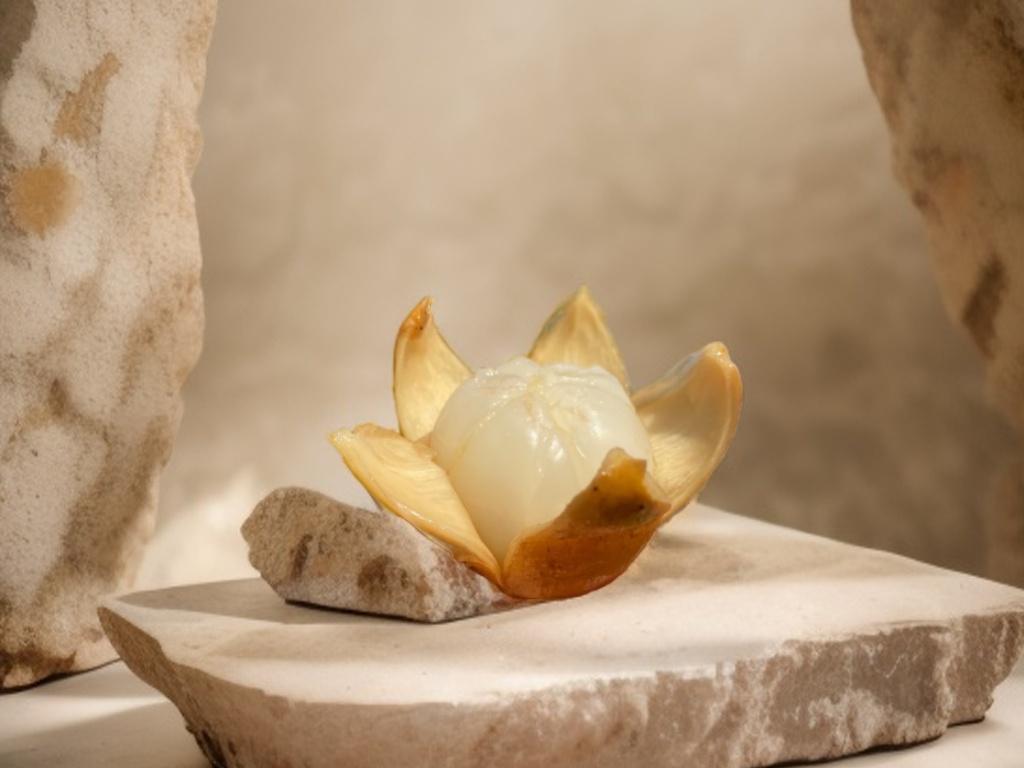
Langsat, also known as lanzones, is a tropical fruit belonging to the mahogany family.
🌍 Langsat originates from Southeast Asia, especially Malaysia and Indonesia.
🌟 Widely spread and popular in Southeast Asian countries, including Thailand, Indonesia, and the Philippines.
Langsat is small in size, similar to a potato, with thin, easily removable brownish-yellow skin. Inside, it contains transparent or white flesh, divided into segments.
The langsat season mainly falls in summer and early autumn.
The taste of langsat is sweet and sour, reminiscent of grapefruit or grapefruit juice with hints of muscat.
✅ Rich in vitamin C, antioxidants, and fiber.
✅ Beneficial for strengthening the immune system, improving digestion, and maintaining skin health.
⚠ Be cautious with the seeds, as they can be bitter and contain a small amount of toxic substances.
Langsat is often eaten fresh, and can also be used in making syrups, jams, and various desserts.
💡 In some cultures, langsat is used in traditional medicine, including for treating diarrhea and malaria.
Ackee (Blighia sapida)
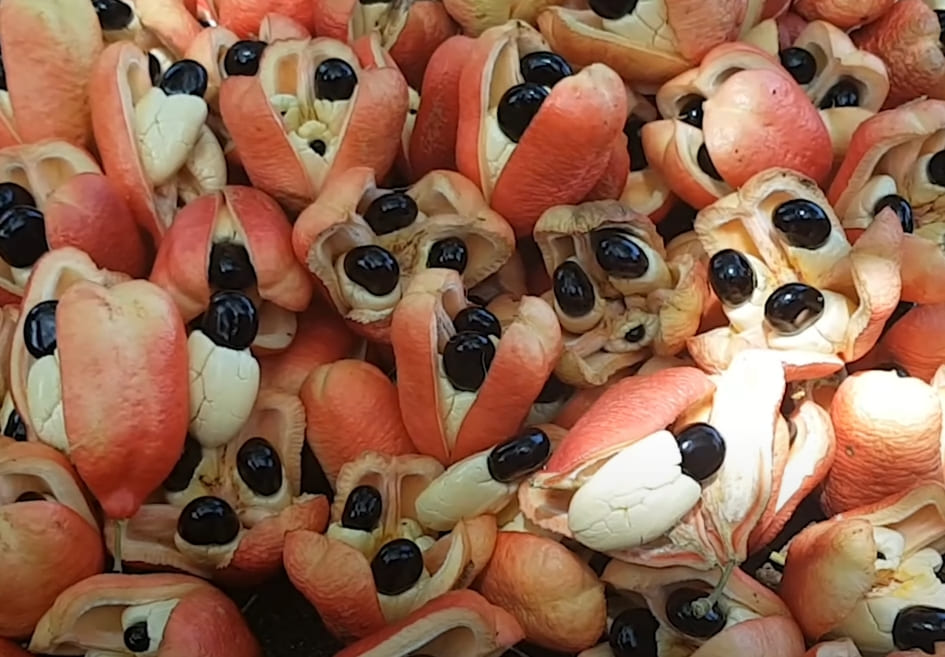
Ackee is a tropical fruit widely known and respected in Caribbean cuisine, especially in Jamaica.
🌍 Ackee originates from West Africa.
🌟 Especially popular in Jamaica and other Caribbean islands, where it is a national dish.
Ackee has bright red skin that opens up when the fruit is ripe, revealing black seeds and soft, creamy yellow flesh.
The ackee season typically occurs from January to March and from July to September.
The ripe flesh of ackee is soft and creamy, often described as having a delicate and nutty taste, reminiscent of young cheese.
✅ Rich in fatty acids, vitamin A, and antioxidants.
✅ Beneficial for heart health and may help in reducing cholesterol levels.
⚠ Unripe and improperly prepared parts of the fruit are poisonous and can cause severe poisoning.
Ackee is traditionally cooked with salted fish fillet, most often cod, in a dish called "ackee and saltfish."
💡 Ackee was brought from West Africa to Jamaica in the 18th century and has since become an important part of Jamaican culture and cuisine.
💡 Ackee is the national fruit of Jamaica and plays a central role in Jamaican cuisine and traditions.
Cupuassu (Theobroma grandiflorum)
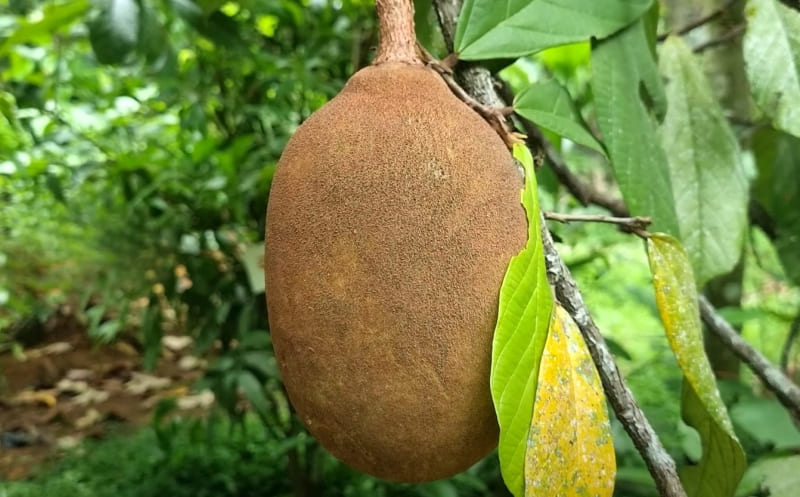
Cupuassu is a tropical fruit closely related to cacao, known for its rich aroma and nutritional properties.
🌍 Cupuassu originates from the Amazon Basin, particularly Brazil.
🌟 Popular in South America, especially in Brazil, where it is used in cuisine and cosmetics.
Cupuassu is large in size, resembling cacao pods, with brown fibrous skin. Inside, it contains several large seeds surrounded by white pulp.
The cupuassu season typically falls at the beginning of the year, from January to April.
The pulp of cupuassu has a creamy texture and exotic taste, reminiscent of a combination of chocolate and pineapple with notes of banana.
✅ Rich in antioxidants, fatty acids, and flavonoids.
✅ Beneficial for improving skin condition, strengthening the immune system, and maintaining overall body tone.
⚠ Should be consumed in moderation due to its high fat and calorie content.
Cupuassu is used for making chocolate, candies, syrups, juices, and liqueurs. It is also popular in desserts and ice cream preparation.
💡 Cupuassu oil is widely used in the cosmetic industry due to its moisturizing properties.
💡 Cupuassu is important for the local economy of the Amazon, where it is cultivated by small farmers and indigenous people.
Baobab (Adansonia)

Baobab, also known as the tree of life, is an exotic fruit that grows on the African baobab tree, a tree famed for its longevity and unusual shape.
🌍 Baobab originates from Africa but is also found in Madagascar, Australia, and the Arabian Peninsula.
🌟 Particularly popular in Africa, where it is used in food, medicine, and culture.
Baobab fruits have an elongated, oval shape, with a hard, woody shell and a soft, fibrous pulp inside, which is dry to the touch.
The baobab season depends on the climate and location but usually, the fruits ripen in the dry season.
The pulp of baobab has a sweet and sour taste, often compared to a combination of grapefruit, pear, and vanilla.
✅ Rich in vitamins C and B, potassium, magnesium, iron, antioxidants, and fiber.
✅ Beneficial for strengthening the immune system, improving digestion, and maintaining energy balance.
⚠ Baobab is generally safe to consume, but should be eaten in moderation due to its high vitamin C and fiber content.
Baobab pulp is used in powder form to add to smoothies, yogurts, baking, and juices. It's also made into drinks and jams.
💡 Baobab trees can live for thousands of years, and their trunks store water, helping them survive in drought conditions.
💡 In many African cultures, baobab has significant symbolic value and is used in traditional ceremonies and legends.
Canepa (Melicoccus bijugatus)
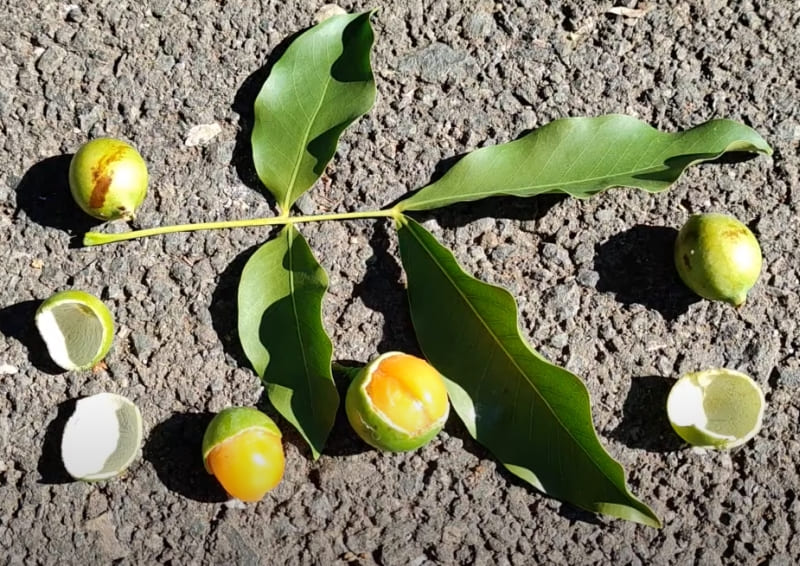
Canepa, also known as Spanish lime, mamoncillo, or genip, is a tropical fruit popular in Latin America and the Caribbean region.
🌍 Canepa originates from South America, especially the regions of Colombia and Venezuela.
🌟 Widely spread and popular in countries of Central and South America, as well as in the Caribbean.
Canepa has a round shape, about the size of a small lime, with bright green smooth skin. Inside, it contains juicy flesh of bright orange or yellow color surrounding a single large seed.
The mamoncillo season typically falls in summer and autumn.
The flesh of canepa is sweet and juicy with a slight sour tinge, reminiscent of a combination of lime and lychee.
✅ Rich in vitamin C, antioxidants, and fiber.
✅ Beneficial for strengthening the immune system and maintaining heart health.
⚠ Avoid consuming the hard seed inside as it is inedible.
Canepa is usually eaten fresh, scraping the flesh with the teeth. It can also be used in making drinks, jams, and desserts.
💡 In many Caribbean and Latin American countries, canepa is popular as street food, especially on hot summer days.
💡 In some cultures, the seeds of canepa are used in crafts and even as natural beads for jewelry.
Lulo (Solanum quitoense)
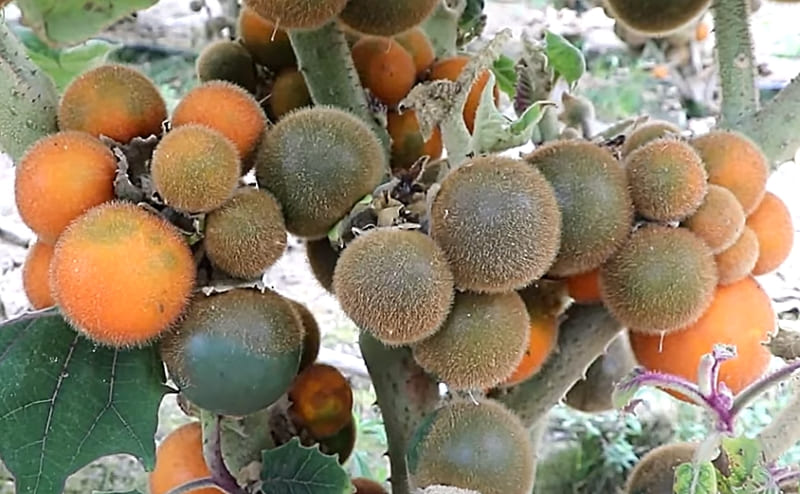
Lulo, also known as naranjilla or Quito- tomato, is a tropical fruit belonging to the nightshade family.
🌍 Lulo originates from the Andean region of South America, especially Ecuador and Colombia.
🌟 Widely spread and popular in Andean countries, including Colombia, Ecuador, Peru, and parts of Central America.
Lulo has a round shape, about the size of a small orange, with smooth green or orange skin. Inside, it contains juicy orange flesh filled with small seeds.
The lulo season continues year-round, making it widely available in growing regions.
The pulp of naranjilla has a sweet and sour taste, reminiscent of a combination of orange, tomato, and pineapple, with a slight bitterness.
✅ Rich in vitamins C, A, and B, as well as fiber.
✅ Beneficial for strengthening the immune system and maintaining skin health.
⚠ Should be consumed in moderation due to the presence of solanine in unripe fruits.
Lulo is used in making juices, cocktails, jams, and desserts. It can also be used in culinary dishes as an ingredient in salads and sauces.
💡 Lulo is an important component of many traditional dishes in the Andean region.
💡 In some regions, lulo is cultivated for its beautiful, bright flowers, which also belong to the nightshade family.
Noni (Morinda citrifolia)
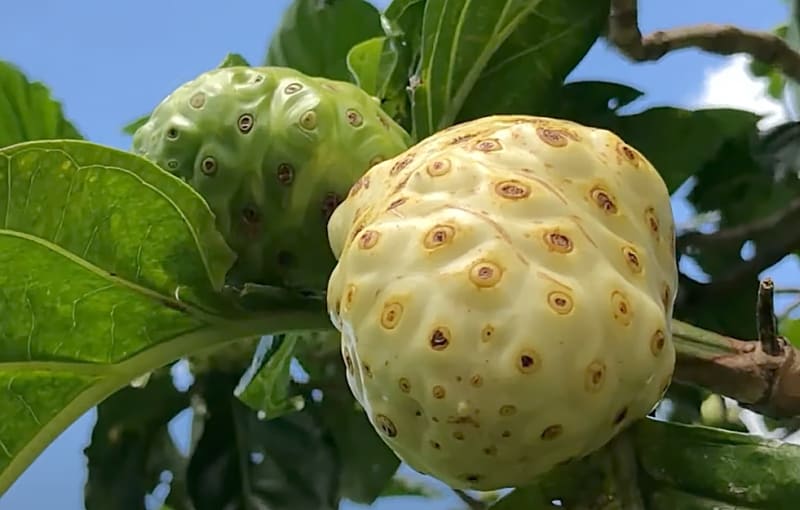
Noni or morinda, also known as Indian mulberry, is a tropical fruit known for its medicinal properties and unique aroma.
🌍 Noni originates from Southeast Asia and Australia.
🌟 Popular in many tropical regions, including Polynesia, the Caribbean islands, and parts of Southeast Asia.
Noni is small in size, most often oval or teardrop-shaped, with concave edges. The skin is green when unripe and yellowish or white when the fruit is ripe.
The morinda season continues year-round, making it widely available in growing regions.
Ripe noni has a very specific, often described as unpleasant taste and smell, reminiscent of moldy cheese or rancid butter.
✅ Rich in antioxidants, vitamins, and minerals.
✅ Traditionally used in folk medicine to treat various ailments, from colds to chronic diseases.
⚠ Some people may experience allergic reactions or intolerance to noni.
Morinda is rarely eaten fresh due to its specific taste. It is more commonly processed into juices, extracts, or dietary supplements.
💡 Noni has been used in traditional medicine for millennia in many cultures.
💡 In some cultures, noni leaves are used to make therapeutic wraps and compresses.
Ugli Fruit (Ugli fruit)
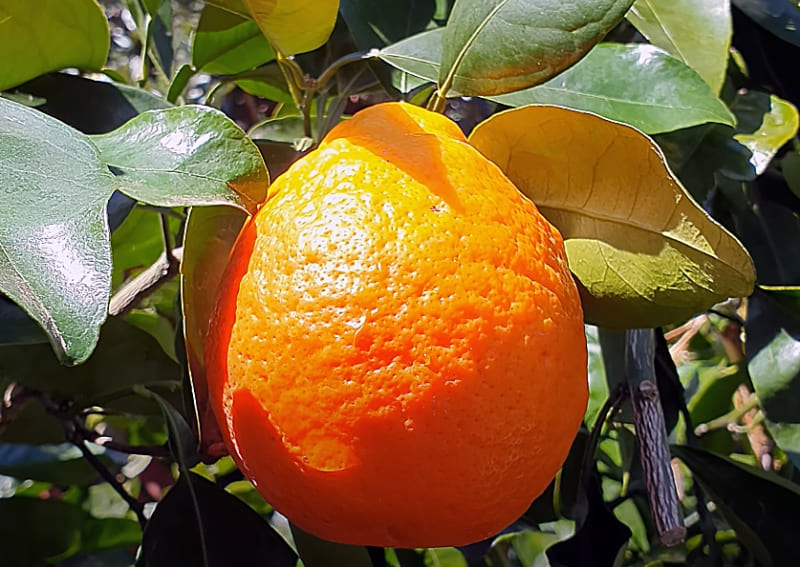
Ugli, also known as ugli fruit, is a citrus hybrid that was accidentally discovered in Jamaica and has since become popular in many countries.
🌍 Jamaica is considered the birthplace of ugli.
🌟 This fruit is popular in many countries thanks to its unique taste and nutritional value.
Ugli has an irregular, rough, slightly deformed shape and size, which can vary. The skin is usually greenish-yellow with orange spots.
The ugli season in Jamaica typically lasts from December to April.
The taste of ugli is a combination of grapefruit, tangerine, and orange, sweet with a slight bitterness.
✅ Rich in vitamin C, fiber, and other beneficial nutrients.
✅ Beneficial for strengthening the immune system and overall health improvement.
⚠ Like other citrus fruits, ugli can cause allergic reactions in some people.
Ugli can be consumed both fresh and in salads, jams, juices, and other dishes where citrus fruits are typically used.
💡 The name "ugli" comes from its unusual appearance, which many consider unattractive.
💡 Despite its appearance, ugli is valued for its nutritional properties and taste, which is often considered milder and less bitter than grapefruit.
Pomelo (Citrus maxima)
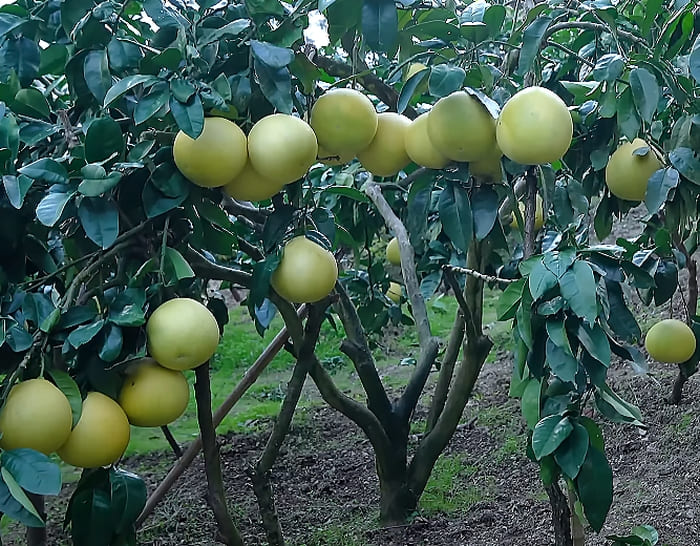
Pomelo, also known as shaddock, is the largest of all citrus fruits and a precursor to fruits like grapefruit.
🌍 Pomelo is believed to originate from Southeast Asia, particularly Malaysia and Thailand.
🌟 Pomelo is popular in many Asian countries and is gradually gaining popularity in the West.
Pomelo has a round or pear-shaped form, with thick, soft skin that can be green or yellow. Inside, it contains flesh ranging from white to pink and red.
The pomelo season varies depending on the region but usually falls at the end of summer and autumn.
The taste of pomelo is sweet and less bitter than grapefruit. It has a refreshing, mildly citrusy taste with a slight tartness.
✅ Rich in vitamin C, fiber, and antioxidants.
✅ Beneficial for strengthening the immune system, improving digestion, and maintaining heart health.
⚠ Like other citrus fruits, it may interact with certain medications, so it should be consumed cautiously when taking pharmaceuticals.
Pomelo is eaten fresh and also used in salads, desserts, and drinks. It is also popular in Asian dishes, especially in Thailand and Malaysia.
💡 Pomelo is considered the ancestor of many other citrus fruits.
Soursop (Annona muricata)
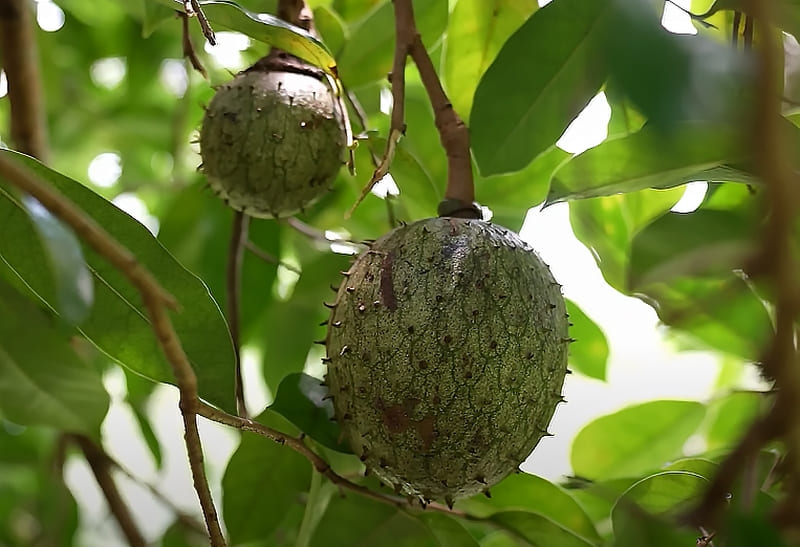
Soursop, better known as guanabana or soursop apple, is a tropical fruit valued for its rich, creamy taste and multiple uses in both cuisine and folk medicine.
🌍 Soursop originates from the tropical areas of America, particularly the Caribbean islands and Central America.
🌟 Popular in many tropical countries, including Latin America, Africa, and Southeast Asia.
Soursop has an elongated or heart-shaped form, with green, rough skin. Inside, it contains white, soft, fibrous pulp with a large number of black seeds.
The guanabana season varies depending on the region but usually falls in the summer.
The pulp of soursop has a sweet, creamy taste reminiscent of a combination of strawberry, pineapple, and citrus fruits, with hints of coconut and musk.
✅ Rich in vitamins C, B1, and B2, as well as fiber and potassium.
✅ Beneficial for strengthening immunity, improving digestion, and relieving some nervous disorders.
⚠ Soursop seeds are inedible and can be toxic.
Soursop apple is consumed fresh and also used for making juices, smoothies, ice cream, jams, and desserts.
💡 In many cultures, soursop is used in folk medicine to treat various diseases, including hypertension and insomnia.
💡 Soursop is often sold in local markets in tropical countries, where it is a favorite treat among locals.


 Español
Español Русский
Русский






